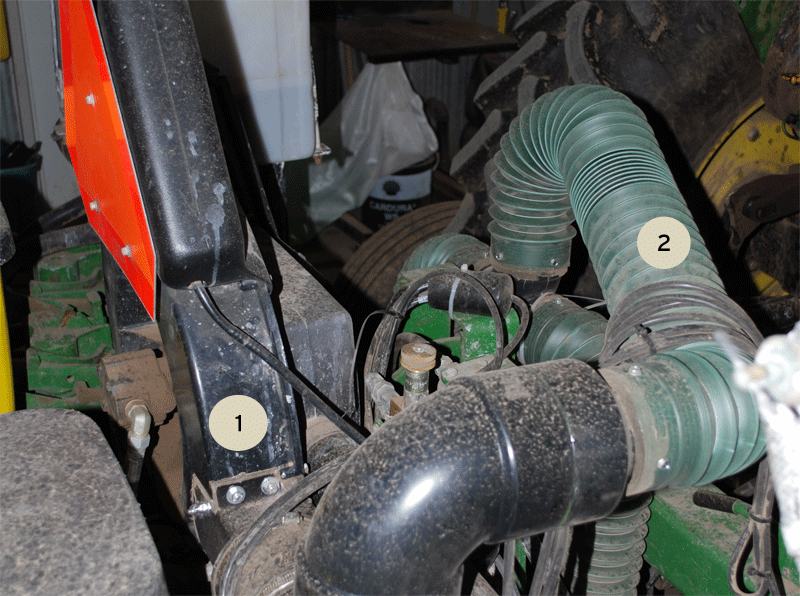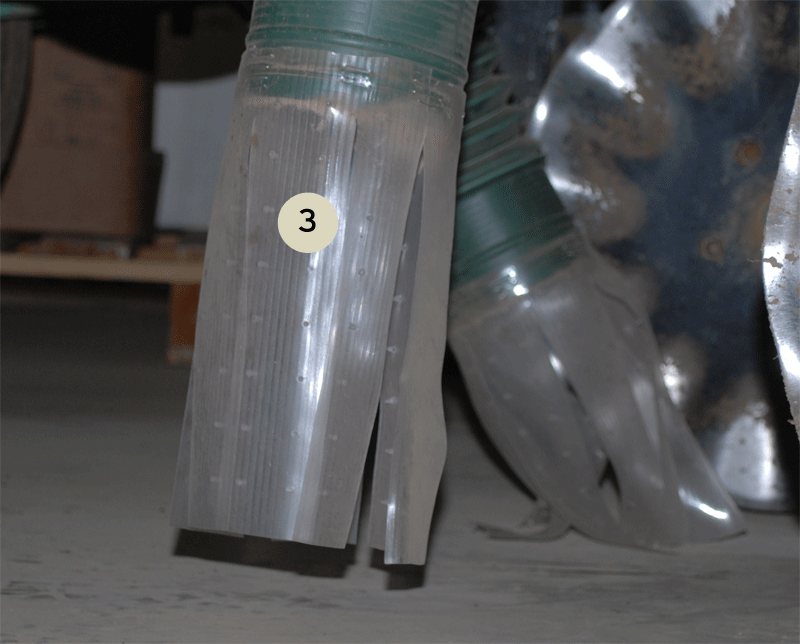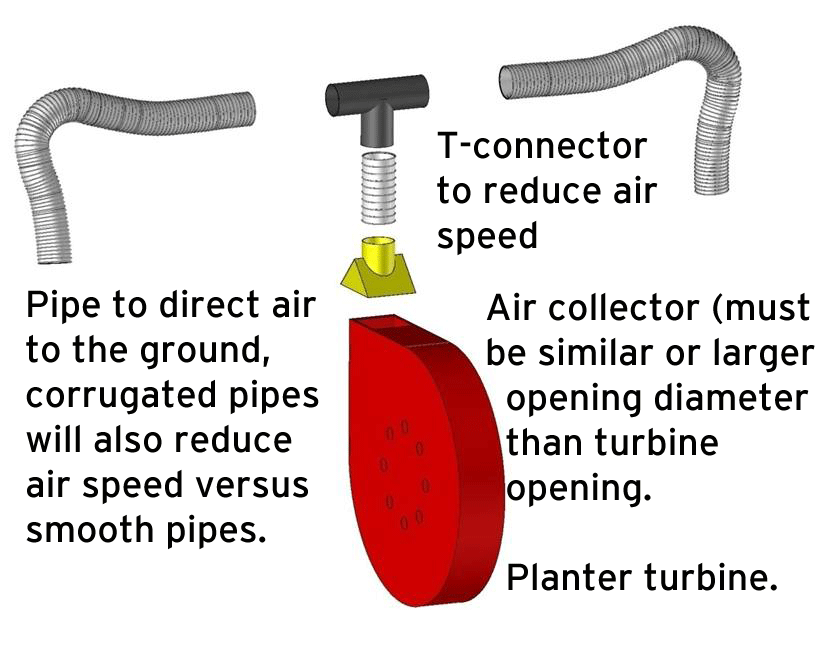Protecting pollinators
REDUCING PESTICIDE EXPOSURE DURING PLANTING
seed-applied insecticides are an important tool for farmers. They help to protect the seed during a critical period of growth while using only a small quantity of insecticide. Despite this reduced potential for exposure, a link was suggested between bee poisoning events and the use of treated corn seed as dust was released from vacuum air planters last spring.
investigation update
Health Canada’s Pest Management Regulatory Agency is currently investigating the incidents with the Ontario Ministry of the Environment (MOE) and the Ontario Ministry of Agriculture, Food and Rural Affairs (OMAFRA). A statement recently released by Health Canada says: “Based on the preliminary information evaluated to date, there is an indication that pesticides used on treated corn seeds may have contributed to at least some of the 2012 spring bee losses that occurred in Ontario, however, there is still additional information being collected for consideration and final conclusions have not been made.”
The three agencies are looking closely at all of the factors that may have contributed to the bee deaths. This includes the type of crops grown, seeding dates, seed treatments, planting equipment, farming practices used, and weather conditions. Given the number of factors involved, it’s not yet known when a final report will be released. However, the crop science industry isn’t waiting for the investigation to be complete. They are proactively working on ways to prevent bee exposure.
“Bees are an important part of the agriculture community; they are relied upon to pollinate crops,” says Paul Hoekstra, Technical Registration Manager, Human and Environmental Exposure at Syngenta Canada Inc. “It’s in everyone’s best interest to help promote and support bee health.”
Luc Bourgeois, Research and Development Manager for Bayer CropScience, agrees. “Taking a multi-step approach is what is really going to be beneficial to helping pollinators.”
building a deflector
Bourgeois has taken a leading role in promoting ways to limit pesticide exposure during planting. He’s studied the benefits of modifying a vacuum corn planter with a deflector; and has presented his findings and cost analysis to groups in Ontario and Quebec.
Bourgeois built a deflector based on the basic design developed by Syngenta and Bayer France as a do-it-yourself project for famers in some European countries who are regulated to use a deflector on their planters.
The basic modification involves a pipe to direct air to the ground and a T connector. The key to this design is to make sure the pipe is bigger than the opening of the fan to avoid creating back pressure that may lead to planter malfunctions. A steel welded fitting is secured over the rectangular fan opening and fitted into a round opening matching the diameter of the tubing. The wind speed is decreased with T connectors that will increase the surface area in the pipes prior to releasing the air into the atmosphere. The increase in surface area will reduce wind speed; doubling the surface area will basically cut the wind speed by half. Corrugated pipes, as well as heavy plastic carpet (cut into strips) used at the end of the deflector tubes to act as a wind breaker, will further decrease the wind speed.
PHOTO:
1 Steel welded fitting to fit the rectangular fan opening into a
round opening matching the tubing diameter
2 4” PVC drain pipe and 4” x 3’ gutter extension pipes.

PHOTO:
3 Heavy plastic carpet cut into strips at the end of the deflector
tubes acting as wind breaker.

To make sure the modification has been done properly, Bourgeois suggests you run the planter at the proper RPM without the deflector and then once you attach the deflector run it again at the same RPM. You should have the same vacuum pressure with or without the deflector.
FIGURE: BASIC DEFLECTOR DESIGN

It’s important to note this design works for pneumatic vacuum planters; it does not work for positive pressure planters or finger planters. Bourgeois built and installed a deflector on a John Deere maximerge four row unit. It took about six hours to build and cost about $300. Jean Bourque from La Coop fédérée (LCF) also followed the basic design to modify a Kinze eight row planter. This unit cost about $600 to modify. Bourgeois estimates the cost of material will be less than $1,000 for any model of planter, but each will require adaptation of the basic design.
Tests done by Bourgeois after his modifications show the deflectors reduce wind speed by one third (to 15km/hr from 45km/hr). Bourque also reported a similar reduction in wind speed after their deflector was installed on their planter.
“My hope is that in the near future the planters will come with a deflector or a way to decrease seed related dust released into the environment and you won’t have to make your own on new planters,” says Bourgeois.
Hoekstra confirms the crop science industry is talking to manufacturers about how they can adapt the European design to our local needs. For now, he suggests that farmers seek advice on a workable solution for their planters. “We would recommend famers talk to their dealer about how best to go about making the modifications to their own equipment.”
Kevin Armstrong, a farmer in Woodstock, Ontario and the director of Grain Farmers of Ontario’s District 7, has been following the investigation and industry response to the bee deaths that occurred this spring; and he’s taken an interest in the proposed modifications to pneumatic planters.
“It looks easy to manufacture a deflector. It’s well within every farmer’s mechanical capability to put one on,” says Armstrong. “I do intend to outfit one of my planters with the deflectors this winter and put it into practice this spring.”
It’s an investment in time and money he feels is worth it. “We have to be proactive in reducing any damage to the environment. A deflector is not something you see on planters around here. If a few more people test it out, it is a positive action and shows we are willing to address this issue of unwanted bee kills.”
improved polymers
“The best use for the chemical is on the seed,” asserts Bourgeois. “The more we can make sure the product goes into the ground the better it is. It is designed to go on the seed, not into the air.”
Polymers are another way to ensure crop protection products end up in the right place. They are already used in combination with seed treatment insecticides for corn which have a higher dust potential. Now, new coatings are being developed that will further reduce the amount of dust that can fall off seeds during planting.
“We’re constantly improving polymers, and providing that information to our seed partners,” says Bourgeois. “The challenge is to make polymers that keep the treatment on the seed but doesn’t interfere with germination.”
Bourgeois notes our polymers and seed treatments already beat the European threshold established for limiting the amount of dust. This year we are at 0.19 milligrams of dust per thousand seed, which is about 26% less than Europe at 0.75 milligram of dust per thousand seed.
“Formulation technology for seed treatments continues to advance at a rapid rate, resulting in minimal amounts of dust from treated seed,” adds Syngenta’s Hoekstra.
Another area of research is to replace the use of talc as a seed lubricant in planters. Talc has the disadvantage of being abrasive on the seed coating and may contribute to the amount of dust released from vacuum planters. Next year, Bayer CropScience is testing a new research product that is designed to replace talc. It reduces the active ingredient in planter dust by 90% compared to talc.
best management practices
Along with changes to equipment and seeds, CropLife Canada (the trade association representing the plant science industry) says best management practices should be followed. These practices include proper handling of seed to reduce dust-off, avoiding planting during windy conditions and controlling flowering weeds in fields prior to planting. Hoekstra also advocates improving the way farmers and beekeepers interact.
“Communication is important, beekeepers and growers need to talk to each other,” he says. “You’re conscious of weather conditions; you need the same level of awareness of bees during planting.”
Farmers should be made aware of hive locations near their fields. And if possible, both parties should discuss alternative locations for bee hives (upwind or in shelter belts).
Bee health is a complex issue that requires a stewardship commitment by the entire agricultural industry. “The farmer is the centre of the industry,” says Hoekstra, “and everyone around him or her has a role to play to support bee health.”
HOW TO CALCULATE THE SURFACE AREA
The surface area of the fan outlet is generally square or rectangular. The surface area is equal to the width multiplied by the length.
For example the Kinze planter has a 3.5 x 12 inches opening = 42 in2 surface area.
The surface area of a tube is the square of the inside radius multiplied by Pi (3.14159).
The deflector on the KINZE has 8 inch diameter tube therefore a surface area of 4 x 4 x 3.14159 = 50.3 in2. Past the T junction the surface area is multiplied by 2 giving a final surface area of 100.6 in2 (compared to 42 in2)
Courtesy Bayer CropScience
For more information on building a deflector:
www.expo-champs.com/fr/visiter/ nouveautes.php
(please note, at this time, the videos are only available in french) •






















